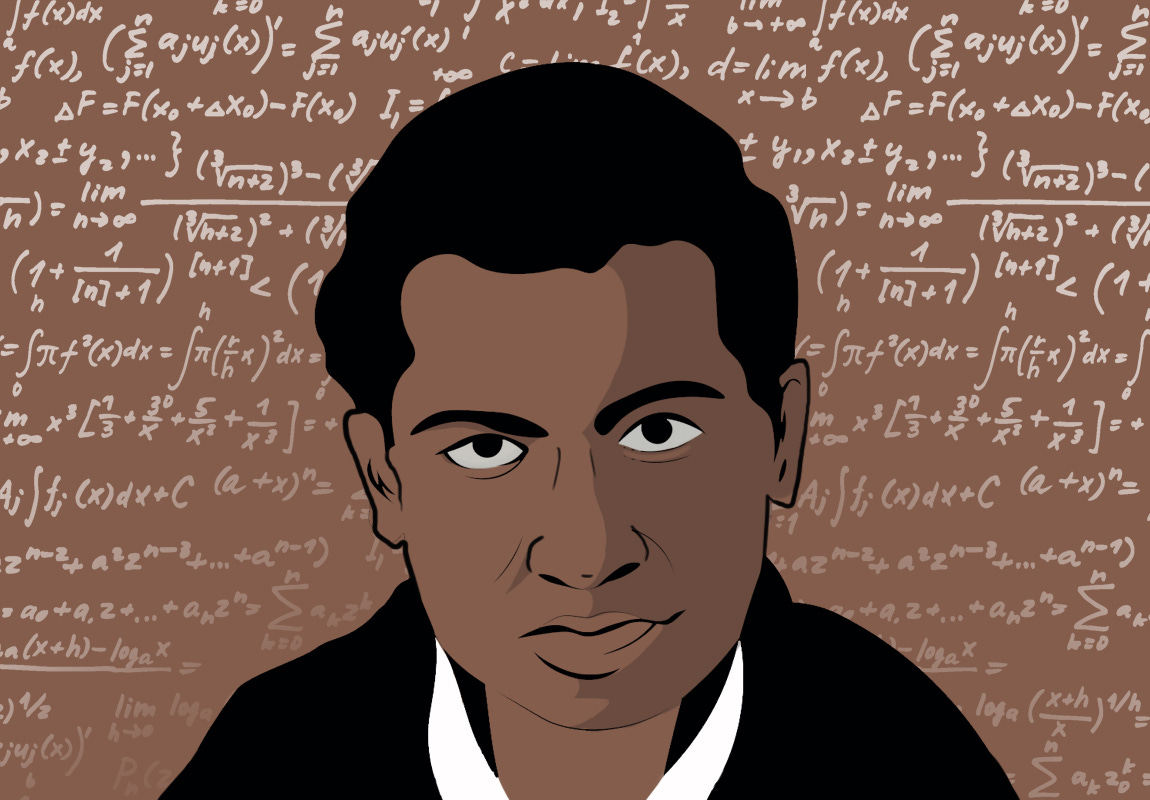Srinivasa Ramanujan: An Unparalleled Mathematical Genius
Srinivasa Ramanujan was a self-taught Indian mathematician who made significant contributions without in-depth formal maths education, including results in number theory, analysis, and infinite series, which had far-reaching influence and applications.
Srinivasa Ramanujan was born on December 22, 1887, to K. Srinivasa Aiyangar, an accountant, and Komalatammal in Erode, a city in southern India. Despite belonging to India's highest socioeconomic stratum, Ramanujan's family was impoverished. He had his early education at the primary school in Kumbakonam, where his family was settled. Ramanujan demonstrated an exceptional aptitude for mathematics from a very young age.
Ramanujan's obsession with maths peaked at age 15 when he came across Synopsis of Elementary Results in Pure and Applied Mathematics, a book by George Shoobridge Carr with a collection of thousands of theorems. The book, originally written to help Cambridge University students pass a famously challenging mathematics exam, changed his life forever. It comprised complex topics, including integral calculus and power series calculations, most of them presented with only the briefest of proofs. Carr's book influenced Ramanujan to a great extent that he only included fewer details when he wrote his own theorems and calculations later, which made his texts difficult for many to understand.
Ramanujan went beyond Carr's book and developed his own theorems and ideas. He became so obsessed with maths that he even dropped out of the University of Madras, leaving behind a scholarship he secured in 1903. However, he failed miserably in all subjects except maths as he refused to study other subjects. The result was unemployment and constant poverty. But Ramanujan stayed on with his passion towards mathematics and worked independently, writing down his works and findings in notebooks and pieces of paper. Unfortunately, he could not afford paper and sometimes collected waste paper to record his work.
In 1909, Ramanujan married Janaki, a girl his mother chose, and was compelled to get a permanent job to support his family. Impressed with Ramanujan's works, mathematician and government official Ramachandra Rao supported him to continue research for a time. Rao also helped him to get a full-time job as a clerk at the Madras Port Trust in 1912. Without a deep formal mathematical education, Ramanujan tackled complex theories and independently discovered results that the greatest mathematicians in history, Leonhard Euler Carl and Friedrich Gauss, had already discovered.
Ramanujan developed the Riemann series, elliptic integrals, hypergeometric series, functional equations of the zeta function, and his own theory of divergent series, in which he used an original method he developed that became known as Ramanujan summation to determine the value of the sum of such series.
Ramanujan published one of his papers in the Journal of the Indian Mathematical Society in 1911. Recognising his ingenious brilliance in maths, mathematician Seshu Iyer and others encouraged Ramanujan to send his works to British mathematician Godfrey H. Hardy, a lecturer at Cambridge University. Hardy initially thought it was one of his colleagues playing a trick on him and examined the papers with another eminent Cambridge mathematician, J. E. Littlewood. They were stunned by the work they saw and immediately wrote back. Correspondence with Hardy, which began in 1913, helped him to get a special scholarship from the University of Madras and a grant from Cambridge Trinity College.
Overcoming the religious objections that restricted him from travelling overseas, Ramanujan moved to Cambridge in April 1914 and started working with Hardy and Littlewood. In 1916, he obtained the equivalent of a PhD from Cambridge University for his work, based on highly composite numbers. He was unmatched by any other living mathematician in his command of continued fractions, despite being nearly entirely ignorant of contemporary developments in the subject.
Ramanujan developed the Riemann series, elliptic integrals, hypergeometric series, functional equations of the zeta function, and his own theory of divergent series, in which he used an original method he developed that became known as Ramanujan summation to determine the value of the sum of such series. In 1918, he was elected to the Royal Society of London after his works were published in both English and European journals.
Ramanujan became seriously ill in 1917 from tuberculosis. He moved back to India in 1919 after improving his condition. However, his condition worsened, and after a year, on April 26, 1920, Ramanujan died at the age of 32. During his short lifespan, he created around 4000 proofs, identities, conjectures, and equations in pure mathematics. A bundle of pages, known as the "lost notebook", and three notebooks Ramanujan left behind contained several unpublished findings and theorems. He was greatly unknown to the world during his lifetime, but his unparalleled genius continues to influence mathematicians worldwide.


